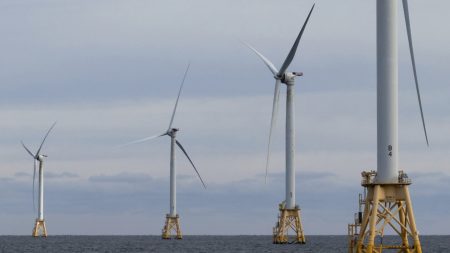Summarize this content to 2000 words in 6 paragraphs Cars from Hyundai and Volvo claimed five of the top 10 spots on U.S. News & World Report’s ranking of the best electric and hybrid vehicles for 2024, while Tesla is shut out. Testers with the publication evaluated nearly 100 EVs and hybrids, scoring them based on price, driving range, performance and other factors. The best EVs offer a mix of power, speed and fast-charging capabilities, said John Vincent, senior editor for vehicle testing. “Today there’s an electric vehicle for almost every segment of the market,” he told CBS MoneyWatch. “Electric cars are our future. They’re going to come faster than some people think, and they really solve a lot of problems.”
For now, however, many motorists remain unconvinced, with concerns about range, charging speeds and reliability. Although a record 1.2 million EVs were sold in the U.S. last year, according to Cox Automotive data, that amounted to just under 8% of the automobile market. EVs have more problems and are generally less reliable than gas-powered cars, according to a 2023 study from Consumer Reports. Here are U.S. News’ top 10 electric and hybrid vehicles for 2024.
Best luxury electric car: Lucid AirThis luxury sedan, which starts at $69,076, has the longest driving range of any EV, according to a U.S. News review. The Lucid Air “is a very cool car,” Vincent said. “It’s incredibly fast, it’s incredibly efficient and can drive 500 miles on a single charge. It’s a better Tesla Model S than the Tesla Model S.”
A Lucid Air Pure fully electric car is displayed during the Geneva Motor Show 2024 at Palexpo on February 26, 2024, in Geneva, Switzerland.
Getty Images
Best luxury electric SUV: Volvo XC40 RechargeThe XC40 Recharge scores well in safety, partly because it has features like lane-departure warning and traffic-sign recognition, according to U.S. News. The vehicle starts at $52,450 and and can travel 293 miles on a single charge.
A 2024 Volvo XC40 SUV (left) and a 2024 S90 Recharge plug-in hybrid electric vehicle (right) at a dealership in New York, New York, on Jan. 30, 2024.
Bloomberg
Best electric SUV: Hyundai Ioniq 5The Ioniq 5 also scores well in safety, with such features as forward automatic emergency braking and rear cross-traffic alert. The vehicle starts at $41,800 and has a single charge driving range of 220 miles.
A Hyundai IONIQ 5 N is displayed during the New York International Auto Show in New York, New York, on March 27, 2024.
Getty Images
Best electric car: Hyundai Ioniq 6 This spacious sedan seats five and offers a smooth ride, according to a U.S. News review. Its standard base model starts at $37,500, while a higher-end model, the Limited, starts at $53,650.
A Hyundai Ioniq 6 is displayed at a car dealership in Seoul, South Korea, on March 27, 2024.
Getty Images
Best electric truck: Ford F-150 Lightning The electric version of Ford’s most popular pickup truck has one of the most spacious cabins in its class, according to U.S. News. The base model can tow 5,000 pounds and the upgraded version can tow 7,700.
“You can move from the gas-powered F-150 to the F-150 Lightning and not notice a lot of difference in how it performs,” U.S. News’ Vincent said.
A 2024 Ford F-150 Lightning electric pickup truck during the Montreal Electric Vehicle Show in Montreal, Quebec, Canada, on April 19, 2024.
Bloomberg
Best luxury plug-in hybrid: Volvo S60 Recharge The Volvo S60 offers some of the fastest battery charging times on the market, according to U.S. News. The vehicle can get a full charge in about nine hours with a 120-volt power outlet and in around four hours using a 240-volt outlet. The S60 comes in five different models, ranging in price from $51,950 to $58,550.
The steering wheel of a 2024 Volvo S60 Recharge plug-in hybrid vehicle at a dealership in New York on Jan. 30, 2024.
Bloomberg
Best plug-in hybrid: Kia Sportage Plug-In HybridThe Sportage Plug-In gives drivers a smooth ride over rough pavement and the engine has zip, accelerating from 0 to 60 miles per hour in about 7 seconds, according to U.S. News. The vehicle comes in two models — the X-Line, starting at $39,490, or the X-Line Prestige, starting at $43,990.Best hybrid car: Toyota Camry Hybrid The Camry Hybrid has a “generous amount of advanced driver-assistance features, including forward collision warning, automatic emergency braking and adaptive cruise control,” according to U.S. News. It comes in five models, with prices that range from $28,855 to $34,295.
A Toyota Camry hybrid is for sale at a dealership on February 6, 2024, in Chicago, Illinois.
Getty Images
Best hybrid SUV: Hyundai Tucson Hybrid The Tucson has one of the most spacious interiors of all hybrid SUVs, according to U.S. News. The vehicle can tow up to 2,000 pounds and comes in four models, ranging in price from $32,575 to $39,715Best luxury hybrid: Lexus NX Hybrid Drivers will notice this luxury vehicle’s leather upholstery, large touch screen and head-up display, according to U.S. News. The Lexus NX has five models, ranging in price from $43,465 to $60,005.
A 2024 Lexus NX 450h+ hybrid SUV during the New York International Auto Show in New York, New York on March 28, 2024.
Bloomberg
Khristopher J. Brooks
Khristopher J. Brooks is a reporter for CBS MoneyWatch. He previously worked as a reporter for the Omaha World-Herald, Newsday and the Florida Times-Union. His reporting primarily focuses on the U.S. housing market, the business of sports and bankruptcy.
















